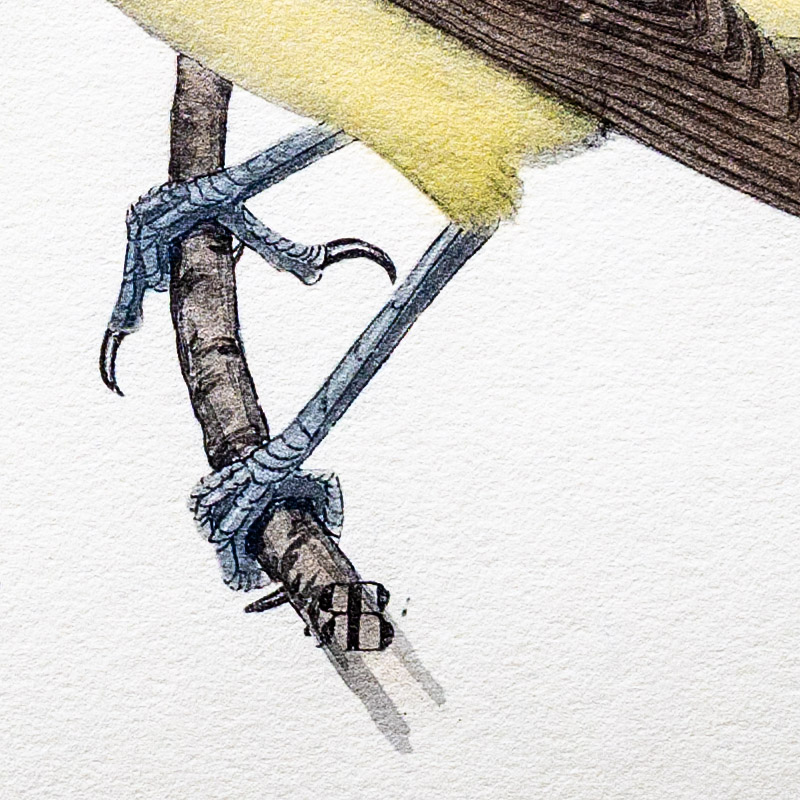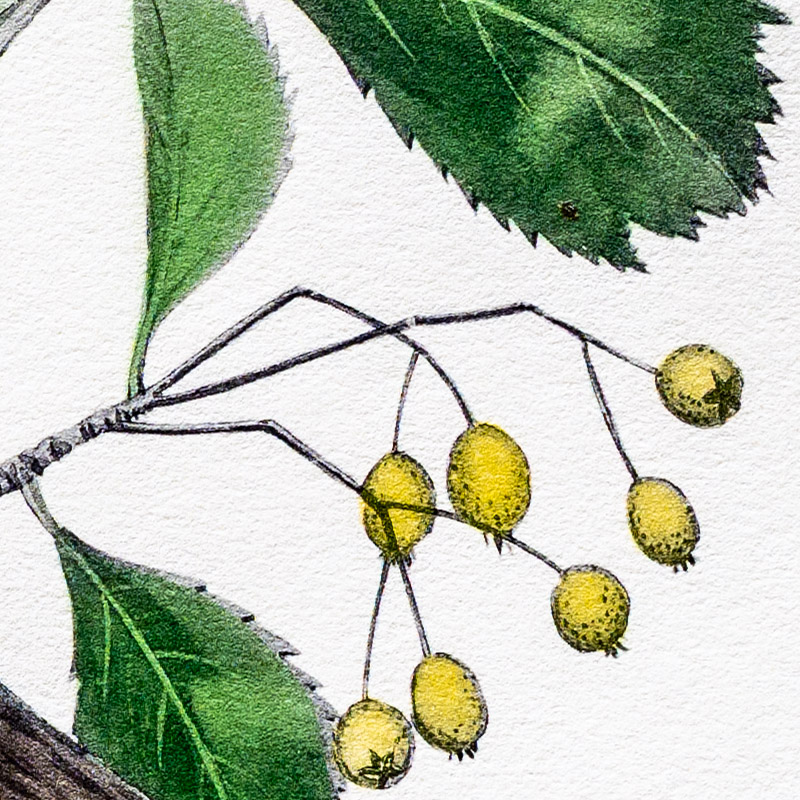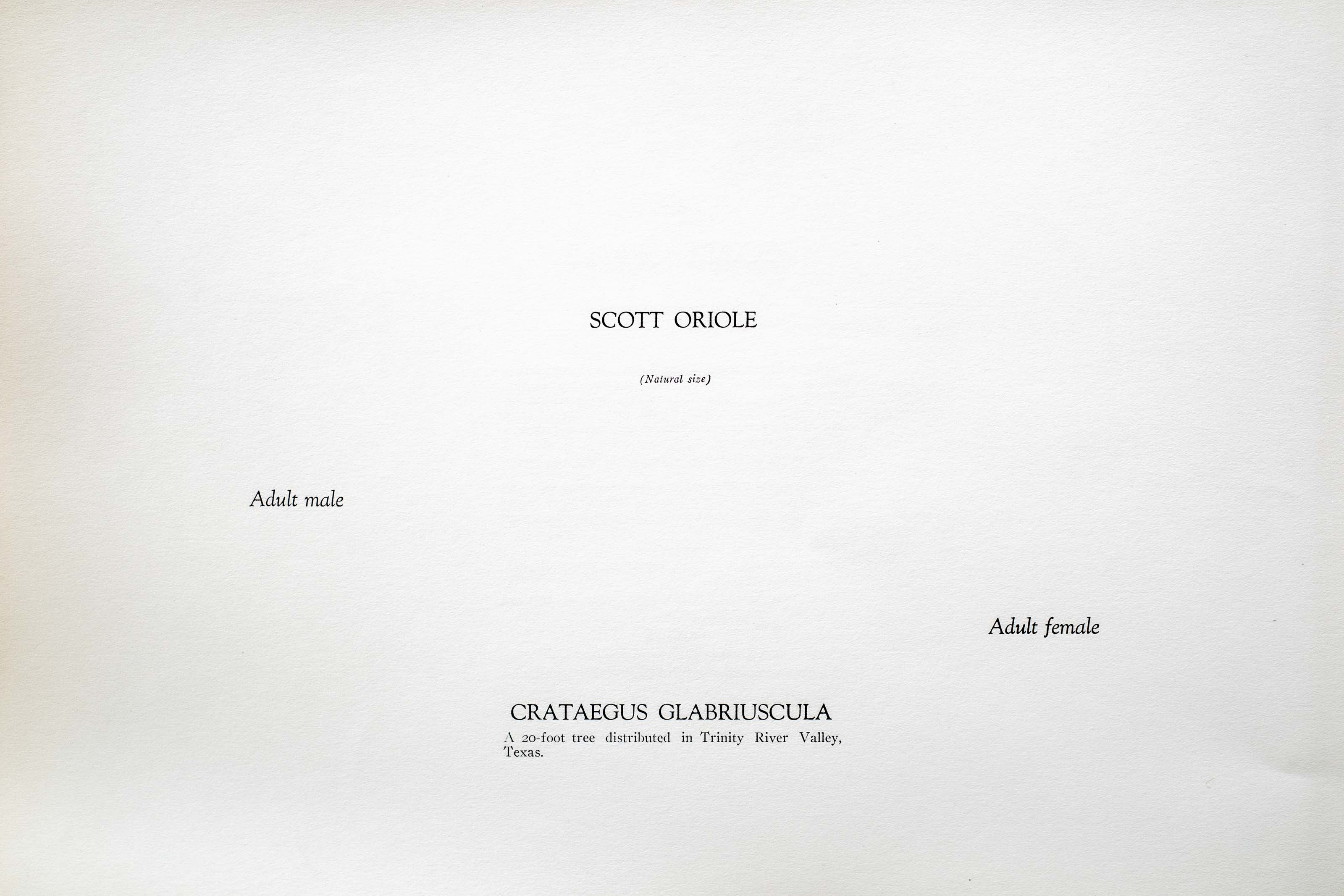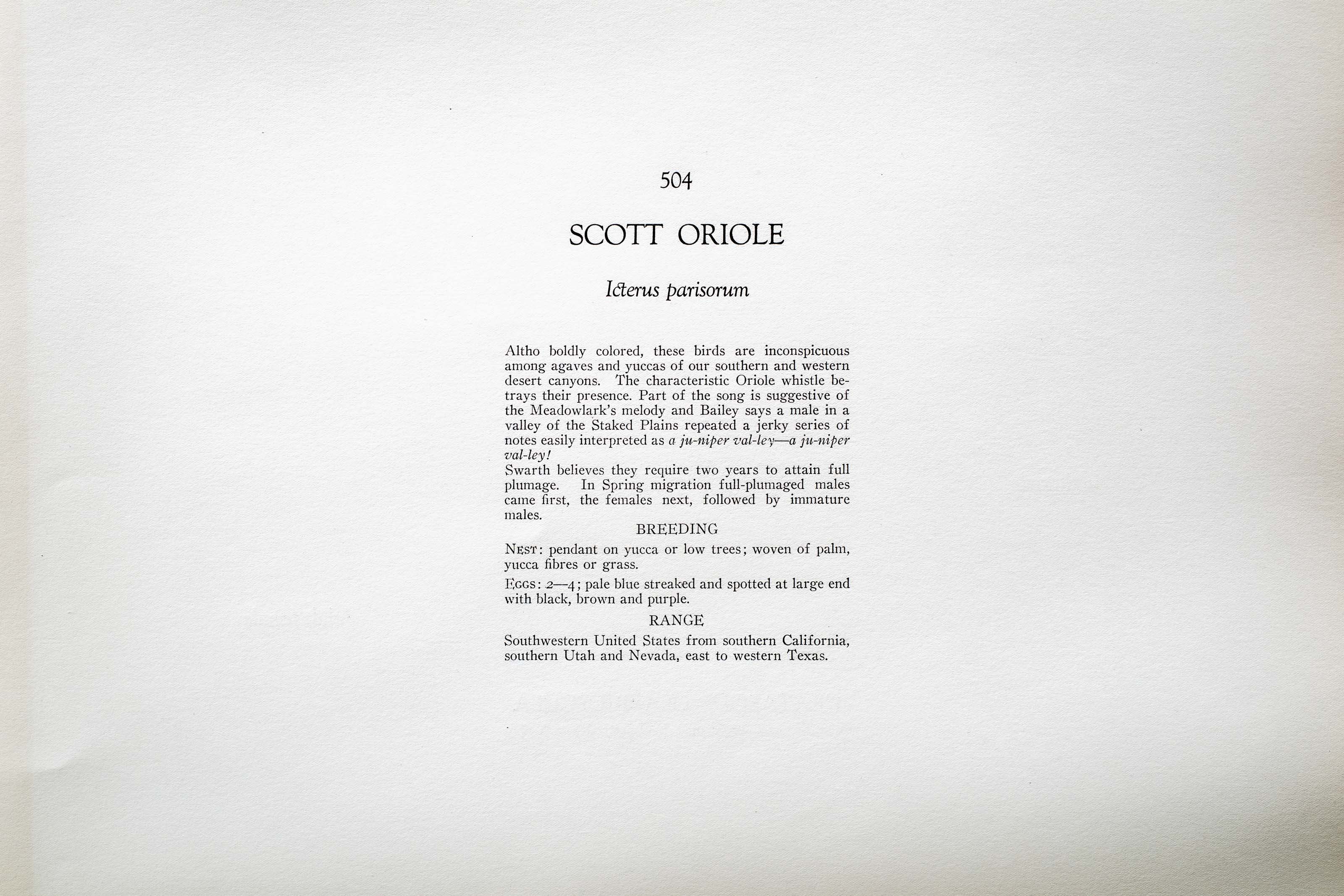






Unknown
1931
8
504
A team of dedicated board members, volunteers, and student interns has published every page in Volume 9. This volume includes 360 images of paintings and lyrical descriptions of birds, now available online for everyone to enjoy anywhere in the world. This is a monumental task. Each volume requires approximately 400 hours to photograph, edit, transcribe, catalog, and publish online. We need your support to complete this work.
If you're tech-savvy, have a good eye, are meticulous with details, and love structured data, please consider volunteering by emailing us at hello@rexbrasher.org.
We encourage all bird lovers and supporters to consider a monetary donation to support our mission to make Rex's work available for everyone. You can provide a one-time or recurring donation online.
Altho boldly colored, these birds are inconspicuous among agaves and yuccas of our southern and western desert canyons. The characteristic Oriole whistle betrays their presence. Part of the song is suggestive of the Meadowlark's melody and Bailey says a male in a valley of the Staked Plains repeated a jerky series of notes easily interpreted as a ju-niper val-ley — a ju-niper val-ley!
Swarth believes they require two years to attain full plumage. In Spring migration full-plumaged males came first, the females next, followed by immature males.
NEST: pendant on yucca or low trees; woven of palm, yucca fibres or grass.
EGGS: 2–4; pale blue streaked and spotted at large end with black, brown and purple.
Southwestern United States from southern California, southern Utah and Nevada, east to western Texas.
A 20-foot tree distributed in Trinity River Valley, Texas.